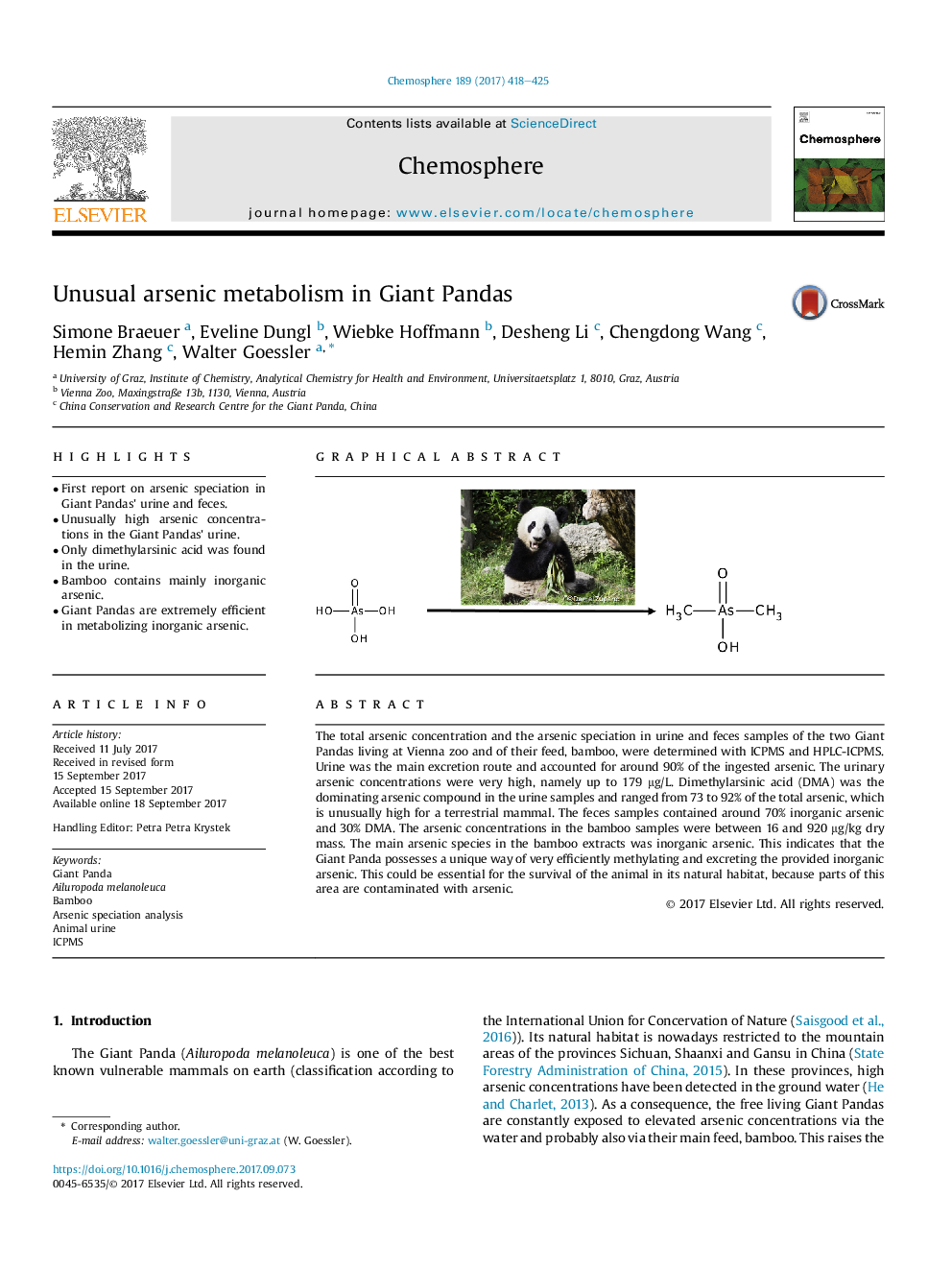| Article ID | Journal | Published Year | Pages | File Type |
|---|---|---|---|---|
| 5745867 | Chemosphere | 2017 | 8 Pages |
â¢First report on arsenic speciation in Giant Pandas' urine and feces.â¢Unusually high arsenic concentrations in the Giant Pandas' urine.â¢Only dimethylarsinic acid was found in the urine.â¢Bamboo contains mainly inorganic arsenic.â¢Giant Pandas are extremely efficient in metabolizing inorganic arsenic.
The total arsenic concentration and the arsenic speciation in urine and feces samples of the two Giant Pandas living at Vienna zoo and of their feed, bamboo, were determined with ICPMS and HPLC-ICPMS. Urine was the main excretion route and accounted for around 90% of the ingested arsenic. The urinary arsenic concentrations were very high, namely up to 179 μg/L. Dimethylarsinic acid (DMA) was the dominating arsenic compound in the urine samples and ranged from 73 to 92% of the total arsenic, which is unusually high for a terrestrial mammal. The feces samples contained around 70% inorganic arsenic and 30% DMA. The arsenic concentrations in the bamboo samples were between 16 and 920 μg/kg dry mass. The main arsenic species in the bamboo extracts was inorganic arsenic. This indicates that the Giant Panda possesses a unique way of very efficiently methylating and excreting the provided inorganic arsenic. This could be essential for the survival of the animal in its natural habitat, because parts of this area are contaminated with arsenic.
Graphical abstractDownload high-res image (213KB)Download full-size image
